
Inle And Around
Lake Inle
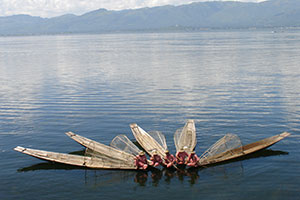 Most Myanmar programs include a visit to lovely Lake Inle. Heho, the small airport, is the gate to this idyll. Sandwiched between two parallel mountain ranges, Lake Inle is Myanmar’s second largest lake and home to several of its peoples. The Shan plateau (1000 m above sea level) with its mild climate has attracted Intha, Pao, Palaung, Danu and – above all – Shan peoples. They live as small farmers in hamlets planting and harvesting rice and sesame seed as well as building little white Buddha pagodas to enhance re-incarnation. The Shan plateau’s fertile red earth favours a leisurely pace of life interrupted only by the excitement of various market days (the markets are a sight-to-be-seen). Heho, Inle, Aungban, Pindaya, Kalaw – all have their markets on a different day – and then it starts all over again. Lake Inle is the centre of this beautiful country, home to the Intha people who are renowned as “legrowers”. Theirs are the famous floating gardens, the floating markets, the floating pagodas, the floating hamlets. The Intha world is at its finest when Phaung Daw Oo Pagoda has its celebrations: a gilded barge takes four small Buddha’s for a blessing to the towns and hamlets surrounding the lake. If you like it serene and quiet don’t miss the excursion by boat to the pagodas of In Dein.
Most Myanmar programs include a visit to lovely Lake Inle. Heho, the small airport, is the gate to this idyll. Sandwiched between two parallel mountain ranges, Lake Inle is Myanmar’s second largest lake and home to several of its peoples. The Shan plateau (1000 m above sea level) with its mild climate has attracted Intha, Pao, Palaung, Danu and – above all – Shan peoples. They live as small farmers in hamlets planting and harvesting rice and sesame seed as well as building little white Buddha pagodas to enhance re-incarnation. The Shan plateau’s fertile red earth favours a leisurely pace of life interrupted only by the excitement of various market days (the markets are a sight-to-be-seen). Heho, Inle, Aungban, Pindaya, Kalaw – all have their markets on a different day – and then it starts all over again. Lake Inle is the centre of this beautiful country, home to the Intha people who are renowned as “legrowers”. Theirs are the famous floating gardens, the floating markets, the floating pagodas, the floating hamlets. The Intha world is at its finest when Phaung Daw Oo Pagoda has its celebrations: a gilded barge takes four small Buddha’s for a blessing to the towns and hamlets surrounding the lake. If you like it serene and quiet don’t miss the excursion by boat to the pagodas of In Dein.Nyaung Shwe
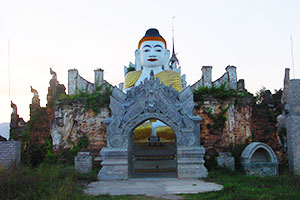 Nyaungshwe, the capital of a former Shan king and the gateway to Inle Lake. The town has a huge market where local produce is sold as well as almost halfway between Heho and Kalaw.
Nyaungshwe, the capital of a former Shan king and the gateway to Inle Lake. The town has a huge market where local produce is sold as well as almost halfway between Heho and Kalaw.
Taunggyi
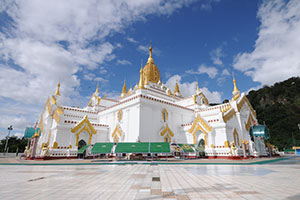 A former British hill station, Taunggyi is a one hours´ drive from Lake Inle. The Ethnological Museum is worth a visit as is the enchanting morning market. The beloved Burmese cigars are produced in Taunggyi and its many manufacturing sites can be visited. The trip to Taunggyi can be combined with a visit of the Katku pagodas.
A former British hill station, Taunggyi is a one hours´ drive from Lake Inle. The Ethnological Museum is worth a visit as is the enchanting morning market. The beloved Burmese cigars are produced in Taunggyi and its many manufacturing sites can be visited. The trip to Taunggyi can be combined with a visit of the Katku pagodas.Kakku
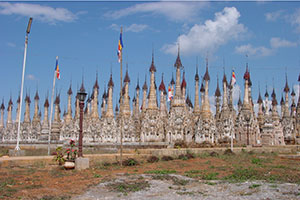 The Kakku pagoda area is situated in the middle of Pao settlements (to the west of Taunggyi). The impressive monuments were built in the 16th century under the reign of Burmese King Alaungsithu. These small Shan pagodas are painted white and are situated very close to each other – and some are still showing original plaster decorations. The region of Katku remained closed for foreigners for a long time. Today a drive through the vast agricultural land of the Shan plateau is an alluring experience.
The Kakku pagoda area is situated in the middle of Pao settlements (to the west of Taunggyi). The impressive monuments were built in the 16th century under the reign of Burmese King Alaungsithu. These small Shan pagodas are painted white and are situated very close to each other – and some are still showing original plaster decorations. The region of Katku remained closed for foreigners for a long time. Today a drive through the vast agricultural land of the Shan plateau is an alluring experience.Pindaya
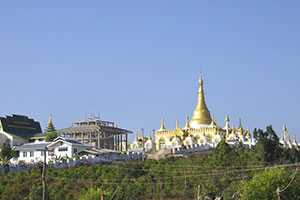 The drive from Heho airport to Pindaya takes almost three hours. The mountainous regions´ limestone caves have – for hundreds of years – harbored Buddhist cave temples built and enlarged by pilgrims. The visit of these limestone caves is highly recommended although much of the magical genius loci were destroyed when electric lights were installed. The faithful amassed thousands of Buddha images on display here. A visit to Pindaya, which has good accommodation for the night, can be combined with a trip to a market (see above) or a trekking tour through the surrounding mountains.
The drive from Heho airport to Pindaya takes almost three hours. The mountainous regions´ limestone caves have – for hundreds of years – harbored Buddhist cave temples built and enlarged by pilgrims. The visit of these limestone caves is highly recommended although much of the magical genius loci were destroyed when electric lights were installed. The faithful amassed thousands of Buddha images on display here. A visit to Pindaya, which has good accommodation for the night, can be combined with a trip to a market (see above) or a trekking tour through the surrounding mountains.Kalaw
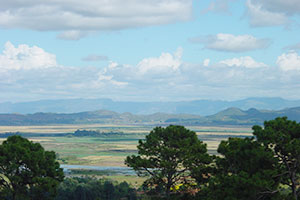 The former British hill station Kalaw is the starting point for various trekking tours. The town itself boasts a pagoda in the middle of town which is worth seeing because of its glass mosaics. A visit to Kalaw can be combined with a trip to Pindaya – driving time is about 2 hours.
The former British hill station Kalaw is the starting point for various trekking tours. The town itself boasts a pagoda in the middle of town which is worth seeing because of its glass mosaics. A visit to Kalaw can be combined with a trip to Pindaya – driving time is about 2 hours.Contact Us
Information
No.(124/2), Ground Floor, 36th Street Middle Block, Between Anawrahta & Mahabandoola Road, Kyauktada Township, Yangon.
Hot line : +959 250197881
WhatsApp : 09 250197881
WhatsApp : 09 250197881
info@myanmarphotographytour.com,
winthandarandassociatestravels@gmail.com
Travel Tips
- Embassies In Myanmar
- Arrival & Departure Procedure
- Myanmar Embassies Abroad
- Do & Don't
- Gazetted Holidays In Myanmar
- Life Style In Myanmar
- General information about Myanmar visa
- Travel Tips
- Our Services
- Naga History
We specialize in Myanmar also known as Burma because with our roots and our years (22 years travel industry )of experience.
